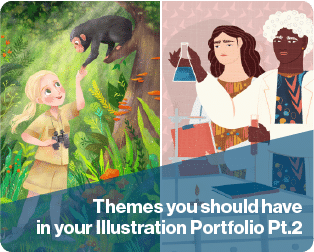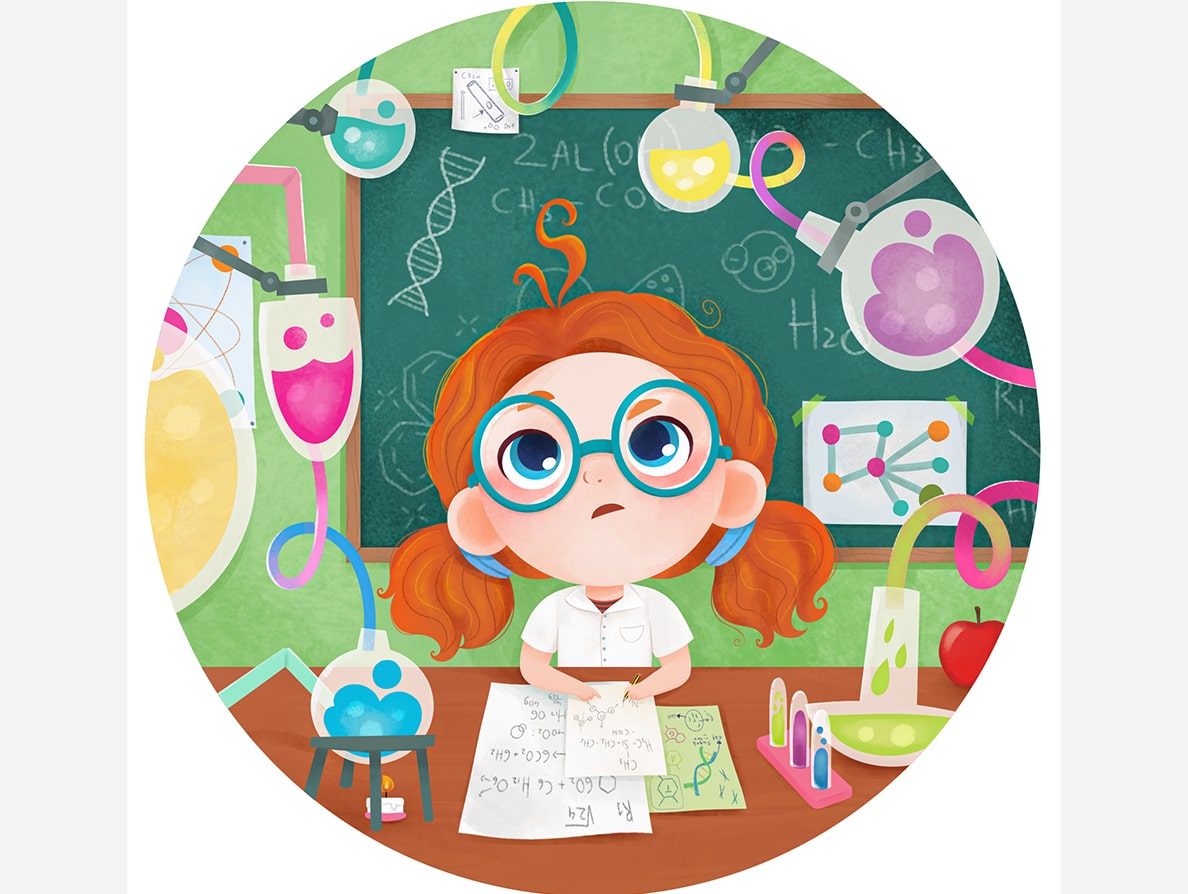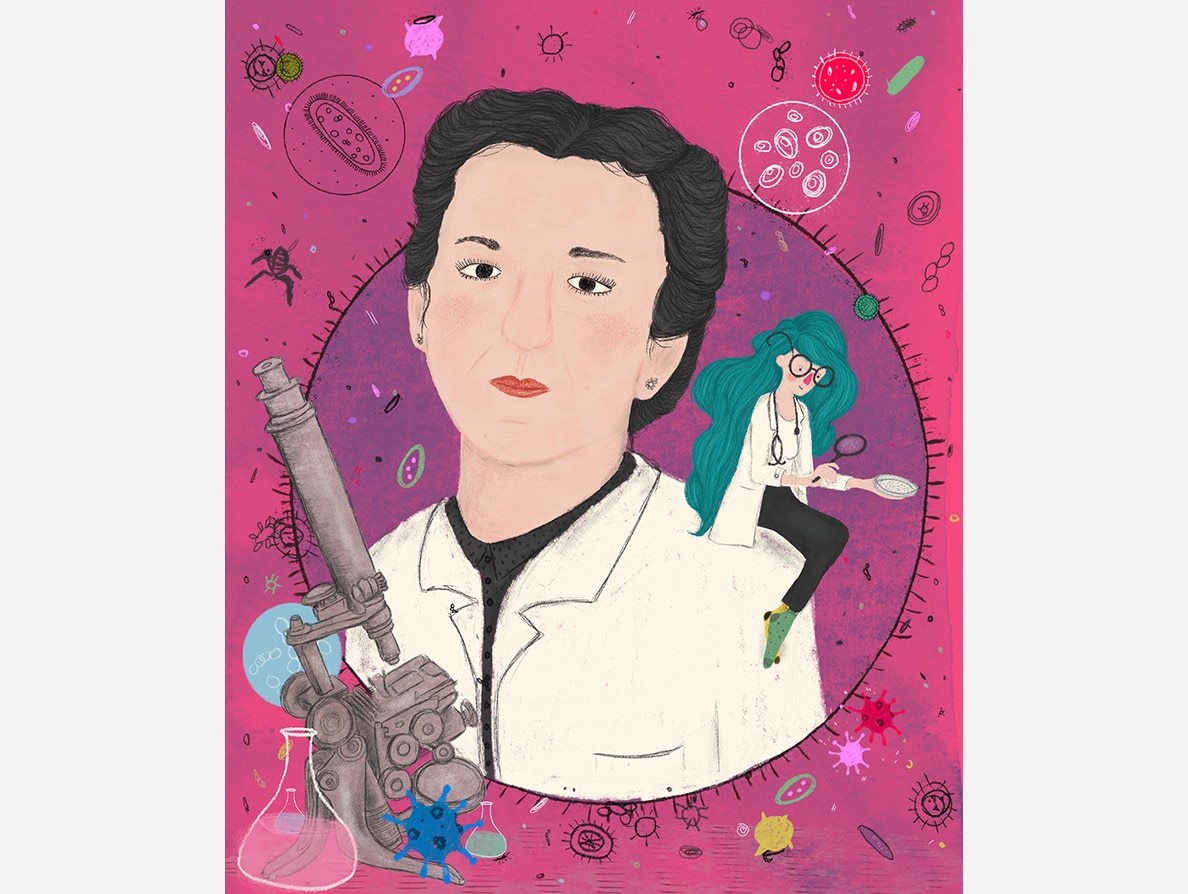Themes to Include in Your Illustration Portfolio Part 2
Published on 06/05/2024Illustrations by Astound US Inc. illustrators Camilla Frescura and Yeena Mariana, and Illo Agency illustrator Ana Salopek
Themes to Include in Your Illustration Portfolio Part 2
Teacher: ITSme Society
Books are one of the most accessible forms of escapism. And you have the power to help readers explore a range of worlds with your illustrations. In this series we will explore the many themes publishers may be searching for when looking for illustrators. If you already have a theme you’re passionate about, play to your interests. Remember that illustrators often get work because they are simply good at illustrating a certain genre.
Themes are not just ideas for settings, but subject matter as well. A subject matter theme to consider is science! A lot of children are naturally curious, and that makes science really fun. Science is about figuring out how the world around us works; exploring and testing new ideas. There are a lot of iconic science imagery such as lab coats, beakes, and test tubes. These can be a great place to start, but science as a theme offers so much more.

Illustration by Astound US Inc. illustrator Elena Bia
One of our favorite memories of school was switching on the Bunsen Burners! Watching bubbles broth in petri dishes and noting down our findings on the blackboard. Biology, chemistry and physics are home to the most fascinating discoveries. We want to encourage young people to develop an interest in these areas, after all any reader could grow up to be the latest prodigy in new scientific discoveries, so why not add science to your portfolio and credit yourself as the catalyst in inspiring the next young Einstein’s journey?! This could be a great chance to explore the more intricate details of nature; how can you draw the process of photosynthesis or how flowers get pollinated by nature. What details can you see inside the macro lens of a microscope? So, pop a lab coat and goggles on your character and don’t be afraid to doodle your favorite, mad-scientist hairdo when the experiment goes wrong!
For more free tips for how to improve your illustration portfolio, subscribe to our ITSme Learning Newsletter!
Other News
How to illustrate kids’ puzzles: from simple to complex!
How to illustrate kids’ puzzles: from simple to complex! Teacher: Bhavi Patel, Advocate Art Agent/ ITSme Learning Almost every theme and subject matter can be adapted to both kid and adult age groups; the key element that differentiates the two is the level of difficulty. This is determined by how much detail is in the...
New Signed Artist: Carolina Coroa
Carolina was born in Belém, north of Brazil, a city well-known for its exuberating nature and strong native culture. She graduated two times, in Communication and in Fashion. After finishing her master at Istituto Europeo di Design in São Paulo, she worked for 6 years creating prints and patterns for fashion companies, running her own design studio and studying...
Calling out to all Creatives!
Are you looking for an Internship? A great opportunity to learn at one of the top illustration agencies in the world. Make sure you send us an email at: hello@itsme.biz
New Signed Artist: Katie Crumpton
I was born in South Carolina in 1992 but now I’m currently living in the Bay Area. I moved to California to attend the Academy of Art University and graduated with a bachelor’s degree in illustration in 2016. I started drawing from a very young age and was too stubborn to stop. I get inspired...
New Signed Artist: Hana Augustine
I am a 27 yo self taught artist from Indonesia. Since my early childhood I have always had pen and papers with me, I would observe and draw. Drawing has become a medium that speaks to my heart. I grew up with lots of children’s books and fairy tales, I was captivated by their worlds...
New Signed Artist: Daniela Tordi
Daniela Tordi is born in Orvieto, a medioeval town in central Italy. Her childhood memories deal with the frescos of a giant cathedral, real tales from the past. She started illustrating as a self-taught in her thirties, asking to writers for adults to write a children’s story as a special gift. This collaboration, among other...







